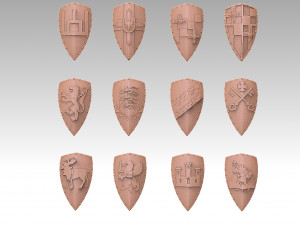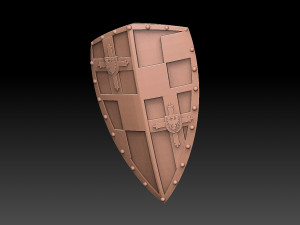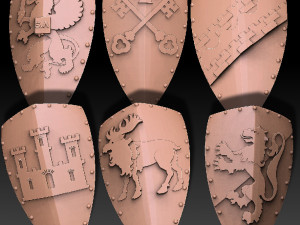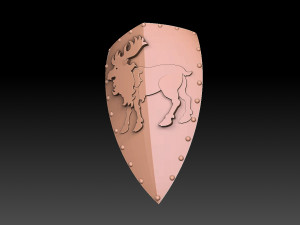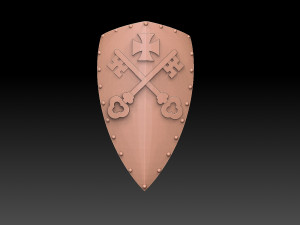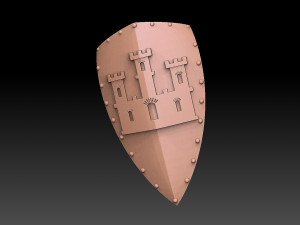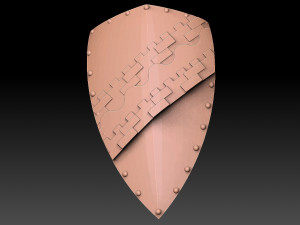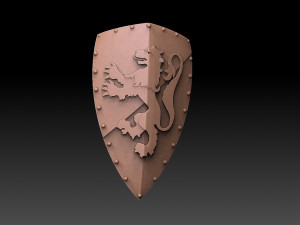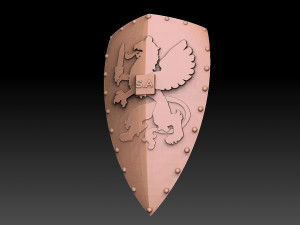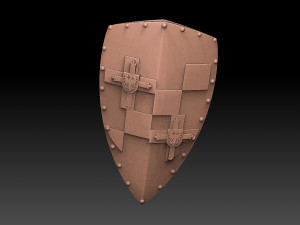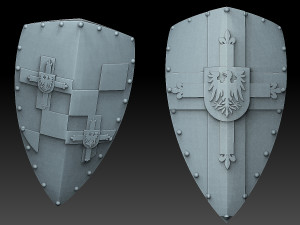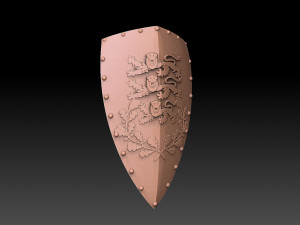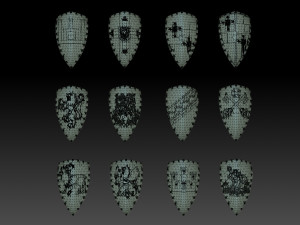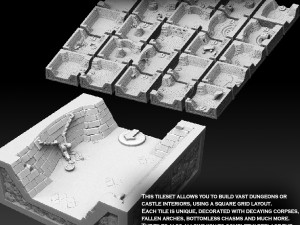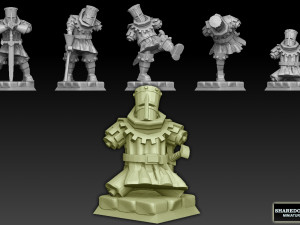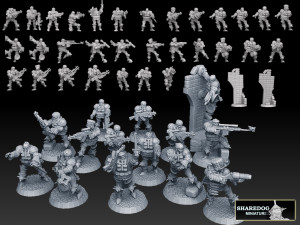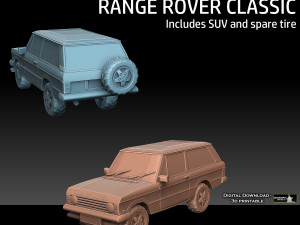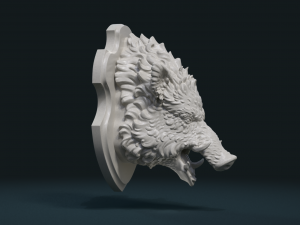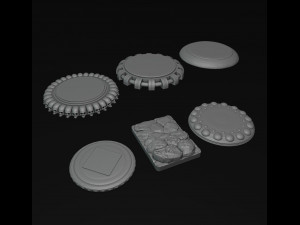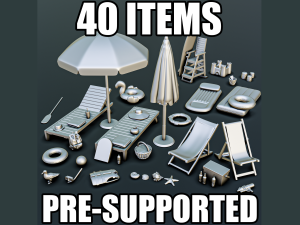Shield Pack Balticum 3D Druckmodell
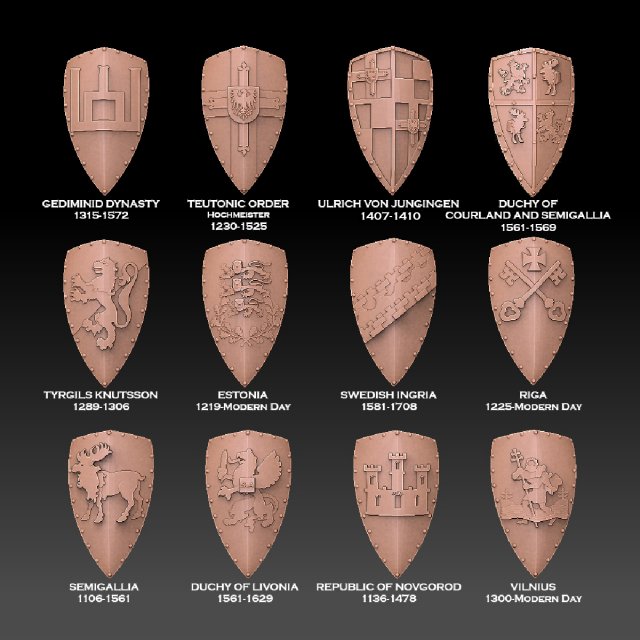
$
5.00 USD
Sie haben $0.00 Credits. Credits kaufen
- Verfügbare Formate: Stereolithography (.stl) 18.19 MB
- Sammlung:No
- Druckfertige:No
- 3D Scan:No
- Erwachsene:No
- PBR:No
- Betrachter:3668
- Datum: 2022-05-23
- Artikel-ID:399424
Shield Pack Balticum 3D Druckmodell stl, Von sharedogminiatures
Intended for 3d print.This pack contains 13 shields with the coat of arms of nations and other polities of the Baltic Region (including Ingria), during the late middle ages and renaissance.
You can see renders of every shield in the image gallery. A list of included nations follows further down on this page.
The shields are primarily intended for use with tabletop miniatures in scales between 25-75mm. Optimal scale is somewhere around 40mm. Some of the finer details will suffer
at smaller scales, and sub-25mm scale is not recommended.
List of included nations:
Note: The information below has been compiled by me using various Internet sources, mostly to give you a basic historical background for the various coats of arms. There may be inaccuracies. If you note any glaring errors, by all means drop me a correction.
Dynasty of Gediminas, 1315-1572. The Gediminid dynasty ruled the grand duchy of Lithuania between 1315 and 1572. Family members included grand duke Vytautas, who commanded the forces of Lithuania during the Battle of Grunwald in 1410. Their coat of arms depicts the Columns of Gediminas, a pre-christian symbol of disputed meaning and origin.
Duchy of Courland and Semigallia 1561-1569 (1795). Short-lived vassal state of the grand duchy of Lithuania and later part of Poland. It was formed out of the ashes of the dismantled Livonian Order. Courland would retain a semi-independent status as a part of Poland, and entered its most prosperous phase under duke Jacob Kettler in the second half of the 17th century. Courland even managed to establish colonies in St. Andrews (Africa) and Tobago (West Indies). Its coat of arms depicts the lion of Courland, and the elk of Semigallia.
Duchy of Livonia 1561-1629. Another duchy formed after the dissolution of the Livonian Order. It was a province of the grand duchy of Lithuania -and later a joint domain with Poland- until conquered by Sweden in 1629. Its coat of arms was a griffin, with the initials of Sigismund II Augustus -king of Poland and grand duke of Lithuania, and founder of the duchy of Livonia- in the middle.
Estonia 1219-Modern Day. Officially adopted as the coat of arms of Estonia in 1925, the coat of arms has much older origins. The three lions were the personal coat of arms of danish king Valdemar II, who invaded Estonia during the Northern Crusades in 1219. They were borrowed by the city of Reval (Tallinn) and remained the city's coat of arms through hundreds of years and teuton, swedish and russian occupation. The branches beneath the lions are oak branches, the oak being the national tree of Estonia.
Ingria 1581-Modern Day. Adopted during the era of Swedish rule in Ingria (Ingermanland in Swedish), the coat of arms depicts the river Neva between two walls of the Swedish fortress of Nyenskans.
Republic of Novgorod 1136-1478. The merchant republic of Novgorod sparred with Sweden for control of Ingria for hundreds of years, and exercised influence in the baltic region. Novgorod was eventually subsumed by the grand duchy of Moscow in 1478.
Riga, 1225-Modern Day. The city of Riga had an instrumental role in the christianization of the baltics, being the first bishopric in the region. It was also an important member of the hanseatic league for hundreds of years. Riga lost its status as Imperial Free City in the Holy Roman Empire in 1581, instead becoming part of the Polish-Lithuanian Commonwealth. It was later conquered by Sweden and was the largest city in the Swedish empire for nearly a century, before being ceded to Russia in 1721.
The coat of arms of Riga -still in use today- depicts two crossed black keys symbolizing the patronage of the Pope and the protection of the keys of St. Peter. The golden cross symbolizes subservience to the bishop.
Semigallia 1106 to 1561. Semigallia is an old region in what is today Lithuania and Latvia. Semigallians resisted crusaders and Teutonic knights during the Northern Crusades in the 13th century. The region later became part of the Duchy of Courland and Semigallia. Its coat of arms is an elk.
Teutonic Order 1230-1525. A militant christian order, first active in the crusades in the Middle East and later in the Northern Crusades in the baltics. The teutons established an independent monastic state in Poland, Livonia and Germany, but were eventually ousted from all but their german holdings in 1525. Their coat of arms is a black cross on white background. The hochmeisters (grand masters) of the order added a golden cross fleury and ineschutcheon with an imperial eagle.
Hochmeister Ulrich von Jungingen 1407-1410. Ulrich von Jungingen was 26th grand master of the Teutonic Order. He was killed leading a force of teutons, vassals and mercenaries during the Battle of Grunwald (also known as the First Battle of Tannenberg).
Tyrgils Knutsson 1289-1306. Tyrgils Knutsson was a Swedish nobleman, councillor and military commander. As Lord High Constable of Sweden, Knutsson was the supreme leader of the army and virtual ruler of the country during the infancy of king Birger Magnusson. He led a crusade against Novgorod in 1292, during which he conquered Karelia and founded the city of Viborg, as well as the fort Landskrona - a precursor to the fortress of Nyenskans. Knutsson returned to Sweden to support his king during the insurrection known as the Håtuna games, but was rewarded for his loyalty by being executed for treason on order of the king himself. The usual explanation is that king Birger feared the influence of his High Constable.
Vilnius 1300-Modern Day. Coat of arms of the city of Vilnius. It depicts saint Christopher carrying the infant Jesus across a river.
If you have any questions or comments, feel free to contact me.
Anyone interested in (semi) regular news and updates from Sharedog Miniatures can follow me on Instagram, under the handle #sharedogminiatures . Druckfertige: Nein
Sie brauchen mehr Formate?
Falls Sie ein anderes Format benötigen, eröffnen Sie bitte ein neues Support-Ticket und fragen Sie danach. Wir können 3D Modelle in folgende Formate konvertieren: .stl, .c4d, .obj, .fbx, .ma/.mb, .3ds, .3dm, .dxf/.dwg, .max. .blend, .skp, .glb. Wir konvertieren keine 3D Szenen und Formate wie .step, .iges, .stp, .sldprt usw!Nutzungsinformationen
Shield Pack Balticum - Sie können dieses lizenzfreie 3D Modell gemäß der Basis- oder erweiterten Lizenz sowohl für private als auch für kommerzielle Zwecke verwenden.Die Basislizenz deckt die meisten Standardanwendungsfälle ab, darunter digitale Werbung, Design- und Visualisierungsprojekte, Social-Media-Konten von Unternehmen, native Apps, Web-Apps, Videospiele sowie physische oder digitale Endprodukte (sowohl kostenlos als auch kostenpflichtig).
Die Erweiterte Lizenz umfasst alle unter der Basislizenz gewährten Rechte ohne Nutzungsbeschränkungen und ermöglicht die Verwendung des 3D Modells in unbegrenzten kommerziellen Projekten unter Lizenzgebührenfreiheit.
Mehr lesen
Bieten Sie eine Geld-zurück-Garantie?
Ja, tun wir. Wenn Sie ein Produkt erworben haben und einen Fehler in den Rendern oder der Beschreibung finden, werden wir versuchen das Problem so bad wie möglich zu beheben. Wenn wir den Fehler nicht beheben können, stornieren wir Ihre Bestellung und Sie bekommen Ihr Geld innerhalb von 24 Stunden nach dem Download des Artikels zurück. . Lesen Sie weitere Bedingungen hierStichworte
warhammer 40k history coat arms heraldry teuton denmark sweden ingria novgorod lithuania estonia livonia latvia knight soldier riga hansa balticEs gibt keine Kommentare zu diesem Artikel.


 English
English Español
Español Deutsch
Deutsch 日本語
日本語 Polska
Polska Français
Français 中國
中國 한국의
한국의 Українська
Українська Italiano
Italiano Nederlands
Nederlands Türkçe
Türkçe Português
Português Bahasa Indonesia
Bahasa Indonesia Русский
Русский हिंदी
हिंदी
